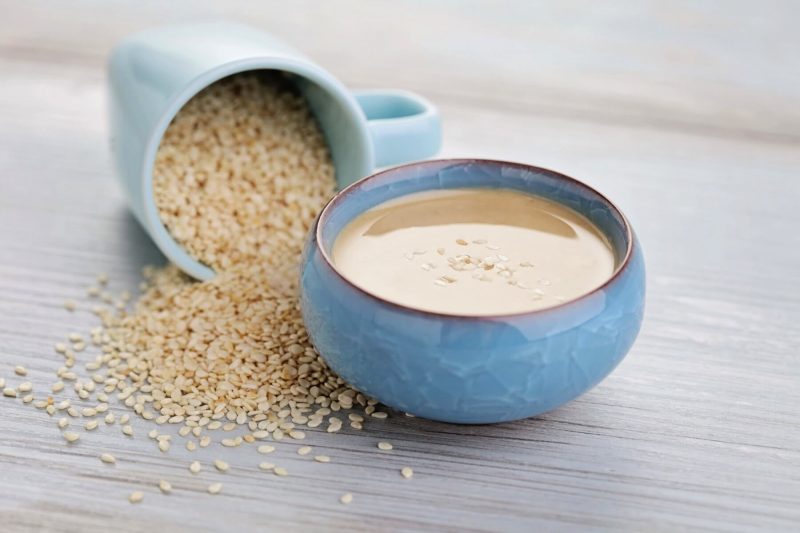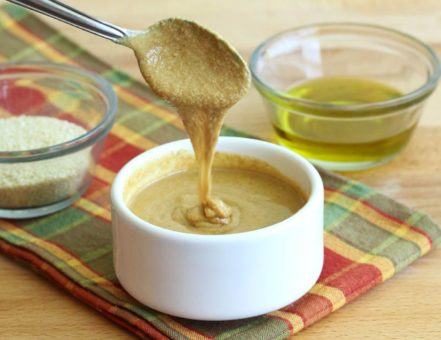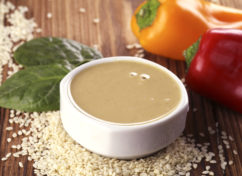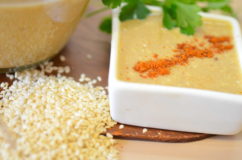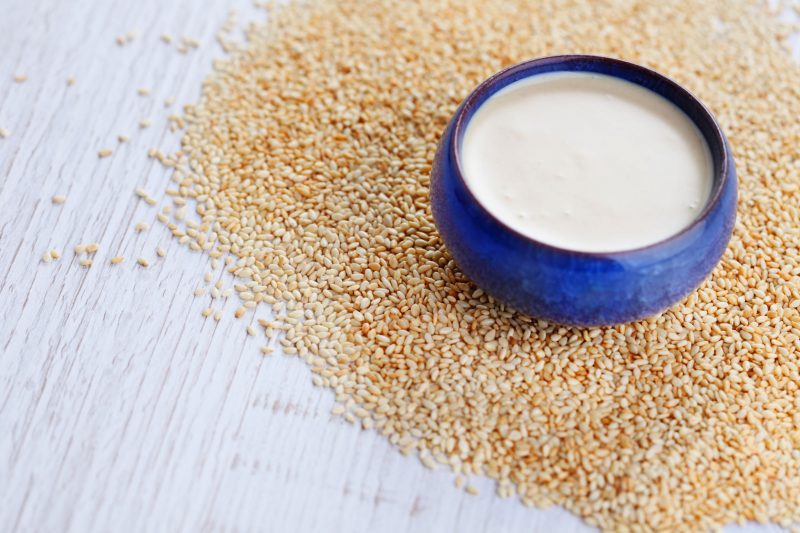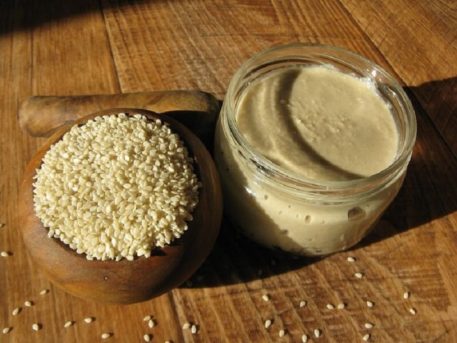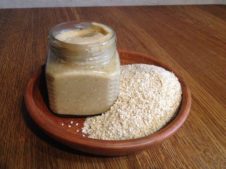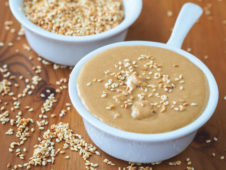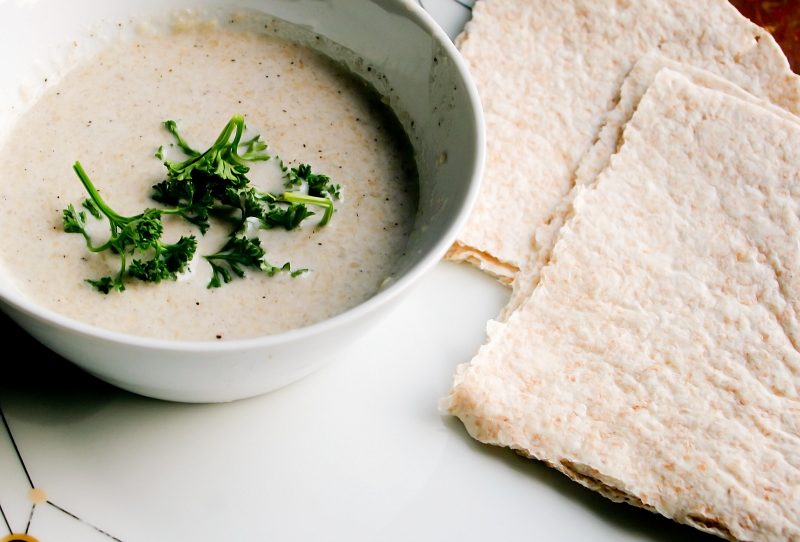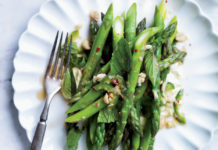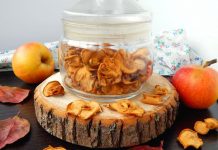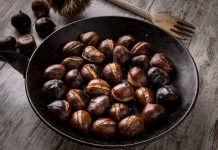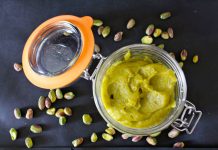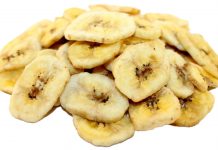Fragrant, spicy, rich taste and delicate texture, these qualities are possessed by sesame paste. Connoisseurs of oriental cuisine and gourmets give her special preference. The taste of the East, for example, can be felt by tasting tofu cheese, dipping it in sesame paste. But in addition to its unique taste, the product is very rich in useful substances and minerals. The original classic composition of the paste is 100% sesame seeds and a little water.
Material Content:
The benefits and harms of sesame paste
Sesame paste, tahini, tkhina or sesame paste - all these different names belong to the same product. This pasta has been known for over 4000 years. It tastes great on its own, as well as in the preparation of sauces, desserts and main dishes.
It is interesting: Sesame oil
The tahina paste in consistency resembles thick sour cream, which has light beige shades. It is prepared from peeled (white) sesame, as well as from raw black raw materials, most often from both types of seeds.
In its composition, the product has an invaluable set of nutrients:
- Vitamins, including A, E, C, B1, which positively affect the digestive organs, immunity, and nervous system.
- Minerals, especially calcium, copper, iron, phosphorus. They strengthen bones, blood vessels and heart, nerves, improve brain function.
- Phytoestrogens rejuvenate the female body, improve the condition of the skin, hair.
- Sesame is rich in omega 3 and 6 fatty acids and beneficial cholesterol.
- Methionine, which is part of the seeds, removes toxins and toxins from the body.
- High-calorie pasta, perfectly satisfies hunger.
However, this excellent product has its disadvantages:
- For people with varicose veins, the product is not recommended, as sesame seeds affect increased blood coagulation.
- Fat people need to remember the high calorie content of the paste.
Cooking Product
The use of sesame paste in cooking is very wide.
In oriental cuisine, it is simply indispensable, and added for cooking:
- tahini halva and other sweets;
- various sauces and gravy;
- hummus and falafel;
- pies, fish and meat and vegetable and bean dishes;
- noodles in Chinese, Japanese peoples;
- many dishes in indian cuisine.
How to make tahini pasta at home
Making sesame paste at home is simple, and the appearance of a new product on the table will allow famous dishes to “open up” with fresh tastes.
Only two ingredients are needed:
- 200 g of sesame seeds;
- 70 g of sunflower or any vegetable oil.
Cooking step by step:
- Fresh sesame seeds are lightly fried in a dry frying pan until creamy (as desired).
- Cool off.
- In a blender, beat the seeds to a crumb state, mix with oil and rub to a uniform consistency.
- If desired, garlic, fresh herbs, pepper can be added to tahini.
The prepared pasta is used as an independent dish, and to complement the taste. Its density is regulated by the volume of oil.
Cooking sesame seeds
Urbech sesame paste, the product without which it is impossible to imagine a single house in the East. This is an ancient and healthy dish. The classic technology of cooking urbeca is the grinding of sesame seeds in stone millstones. But you can make it at home. Cooking is easy.
Essential Ingredients:
- 200 g of sesame seeds;
- 30 g of olive or cream (melted) butter.
The preparation is as follows:
- In this recipe, sesame seeds are used raw (you don’t need to dry and fry!).
- The seeds are mixed with oil and wiped in a combine or blender.
- According to the classic recipe, Urbech is ready.
- If desired, you can add honey, sugar, salt, lemon juice. These ingredients will give a special piquancy to urbecu.
Important! The urbec cooked in the classical way can be stored for up to three months in the refrigerator.
Urbech goes well with fruits, bread, pastries and is a highly nutritious product.
Tahini Sauce Recipe
Tahini sauce is easy to prepare, and has its own unique, refined taste.
You will need the following products:
- 200 g of sesame seeds;
- 90 g of vegetable oil;
- parsley - a pair of twigs;
- 3 cloves of garlic;
- juice from half a lemon;
- to taste salt and pepper.
Cooking:
- Sesame seeds are dried in a pan, stirring.
- Cool down.
- The seeds are ground in a blender or coffee grinder.
- Oil, garlic are added to the seeds and everything is crushed to a homogeneous mass.
- At this stage, the classic cooking option is ready. The sauce can be transferred to glass or porcelain containers and put in the refrigerator for storage.
- If the sauce is used immediately, then finely chopped parsley, lemon juice, as well as salt and pepper are added to it.
- The sauce is ready to serve.
Tahini sauce, prepared according to this recipe, has a strong and deep taste with a delicate sourness of lemon.


